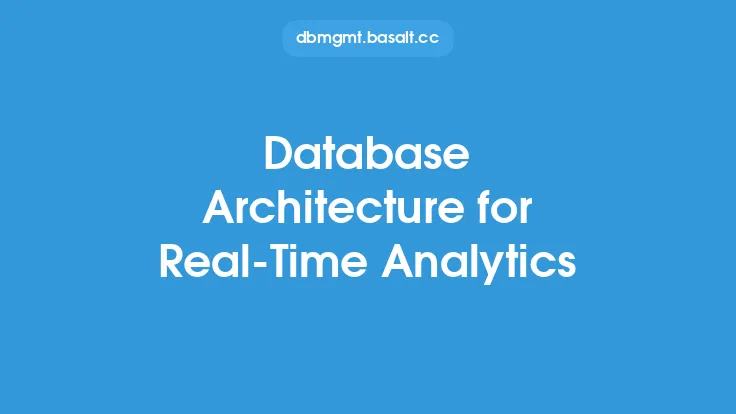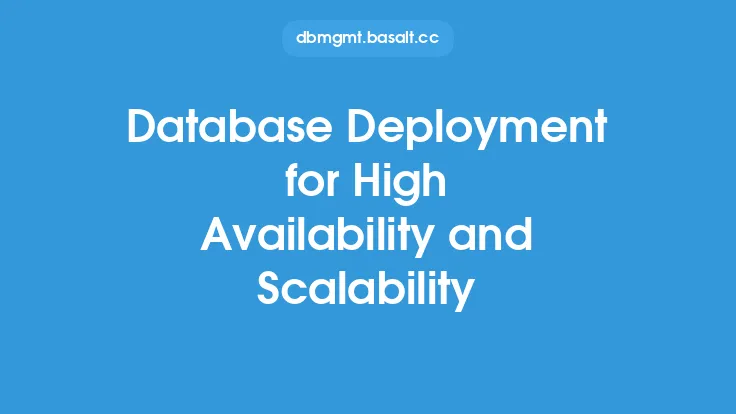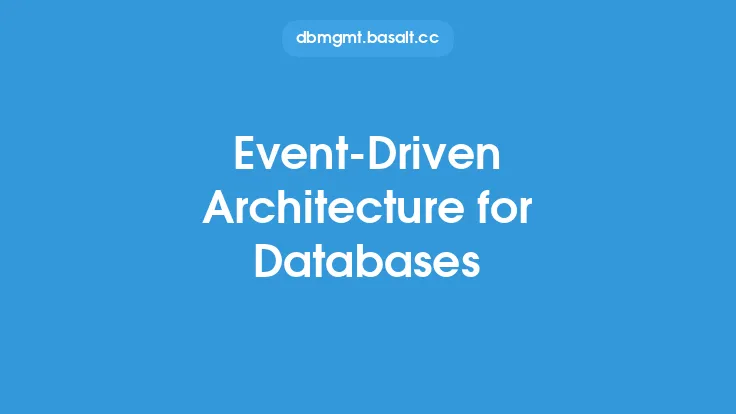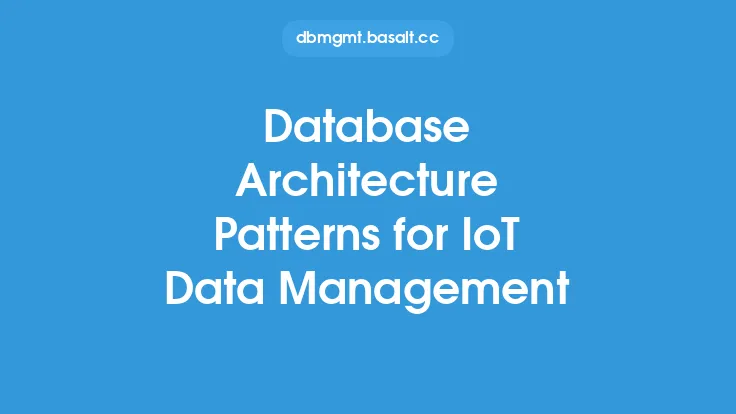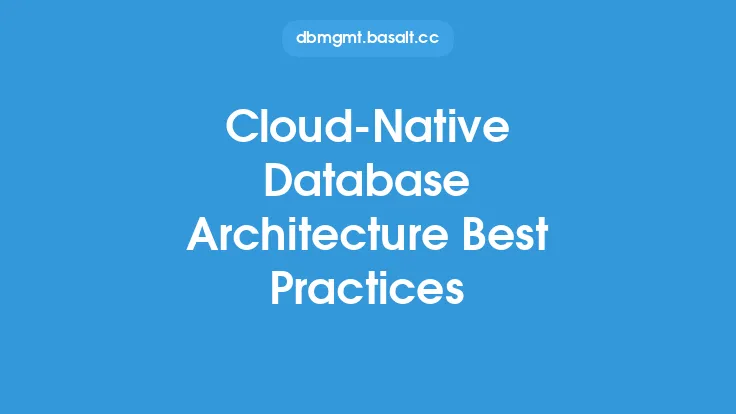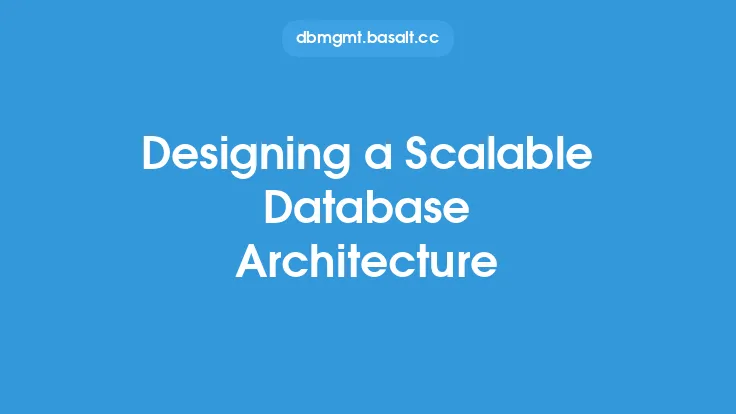Designing a scalable database architecture is crucial for high-traffic applications, as it directly impacts the performance, reliability, and user experience of the system. A well-designed database architecture can handle increased traffic and data volume without compromising on performance, while a poorly designed one can lead to bottlenecks, downtime, and data loss. In this article, we will explore the key principles and patterns of scalable database architecture, and discuss the various techniques and technologies that can be used to build high-performance databases for high-traffic applications.
Key Principles of Scalable Database Architecture
Scalable database architecture is based on several key principles, including horizontal partitioning, data replication, load balancing, and caching. Horizontal partitioning involves dividing the data into smaller, independent pieces, called shards, which can be stored on separate servers. This allows the database to scale horizontally, by adding more servers as the data volume increases. Data replication involves maintaining multiple copies of the data, to ensure that the system remains available even in the event of a failure. Load balancing involves distributing the incoming traffic across multiple servers, to prevent any single server from becoming overwhelmed. Caching involves storing frequently accessed data in memory, to reduce the number of database queries and improve performance.
Database Architecture Patterns
There are several database architecture patterns that can be used to build scalable databases, including the master-slave pattern, the master-master pattern, and the peer-to-peer pattern. The master-slave pattern involves designating one server as the master, and using the other servers as slaves. The master server handles all write operations, while the slave servers handle read operations. The master-master pattern involves designating all servers as masters, and allowing them to handle both read and write operations. The peer-to-peer pattern involves designating all servers as equals, and allowing them to handle both read and write operations. Each pattern has its own advantages and disadvantages, and the choice of pattern depends on the specific requirements of the application.
Distributed Database Architecture
Distributed database architecture involves storing data across multiple servers, which can be located in different geographic locations. This allows the database to scale horizontally, and provides improved performance and availability. Distributed databases can be designed using various techniques, including sharding, replication, and partitioning. Sharding involves dividing the data into smaller pieces, and storing each piece on a separate server. Replication involves maintaining multiple copies of the data, to ensure that the system remains available even in the event of a failure. Partitioning involves dividing the data into smaller pieces, and storing each piece on a separate server.
NoSQL Databases
NoSQL databases are designed to handle large amounts of unstructured or semi-structured data, and provide improved performance and scalability. NoSQL databases can be categorized into several types, including key-value stores, document-oriented databases, and graph databases. Key-value stores involve storing data as a collection of key-value pairs, and provide fast lookup and retrieval. Document-oriented databases involve storing data as a collection of documents, and provide flexible schema design and querying. Graph databases involve storing data as a collection of nodes and edges, and provide efficient querying and traversal.
Cloud-Based Database Architecture
Cloud-based database architecture involves storing data in the cloud, and provides improved scalability, performance, and availability. Cloud-based databases can be designed using various techniques, including database-as-a-service, platform-as-a-service, and infrastructure-as-a-service. Database-as-a-service involves providing a managed database service, which can be scaled up or down as needed. Platform-as-a-service involves providing a managed platform, which can be used to deploy and manage databases. Infrastructure-as-a-service involves providing a managed infrastructure, which can be used to deploy and manage databases.
Best Practices for Scalable Database Architecture
There are several best practices that can be followed to design a scalable database architecture, including designing for horizontal scaling, using data replication and load balancing, and implementing caching and indexing. Designing for horizontal scaling involves designing the database to scale horizontally, by adding more servers as the data volume increases. Using data replication and load balancing involves maintaining multiple copies of the data, and distributing the incoming traffic across multiple servers. Implementing caching and indexing involves storing frequently accessed data in memory, and using indexes to improve query performance.
Common Challenges and Solutions
There are several common challenges that can be encountered when designing a scalable database architecture, including handling high traffic, managing large data volumes, and ensuring data consistency. Handling high traffic involves designing the database to handle increased traffic, without compromising on performance. Managing large data volumes involves designing the database to store and manage large amounts of data, without compromising on performance. Ensuring data consistency involves designing the database to ensure that the data remains consistent, even in the event of a failure. Solutions to these challenges include using load balancing and caching, implementing data replication and partitioning, and using distributed database architecture.
Conclusion
Designing a scalable database architecture is crucial for high-traffic applications, as it directly impacts the performance, reliability, and user experience of the system. By following the key principles and patterns of scalable database architecture, and using various techniques and technologies, it is possible to build high-performance databases that can handle increased traffic and data volume without compromising on performance. By understanding the best practices and common challenges, and using the right solutions, it is possible to design a scalable database architecture that meets the needs of high-traffic applications.
